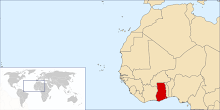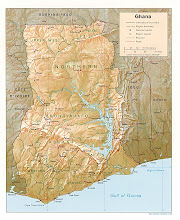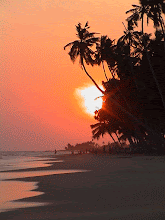


Yesterday Prince took us to a hotel nearby that has a few strange animals. First of all, just so you know, it is called Hotel Messiah. Righteous huh?

 Look at the cute baby monkey. It was so little.
Look at the cute baby monkey. It was so little.
 I want this monkey to be my baby. When I grow up, no human children for me. I'm adopting baby monkeys.
I want this monkey to be my baby. When I grow up, no human children for me. I'm adopting baby monkeys. This monkey is ugly and I don't want it to be my baby.
This monkey is ugly and I don't want it to be my baby.

 Spiritual crocodiles anyone?
Spiritual crocodiles anyone? This is Amelia. She is sweet and innocent. Look at that nice face.
This is Amelia. She is sweet and innocent. Look at that nice face. This is Amelia's fufu (in the blue bowl). Fufu always comes with a meat. Amelia didn't know what the meat was, so she asked. The answer wasn't what she wanted to hear. See below to find out what the meat was.
This is Amelia's fufu (in the blue bowl). Fufu always comes with a meat. Amelia didn't know what the meat was, so she asked. The answer wasn't what she wanted to hear. See below to find out what the meat was. Ever heard of a grass cutter? The Greater Cane Rat (Thryonomys swinderianus) is one of two species of cane rats, a small family of African hystricognath rodents. It inhabits Africa, south of the Saharan Desert. The cane rat lives by reedbeds and riverbanks. As humans move into such territories, the cane rats accepted plantations and cultivated areas. Cane rats can grow about two feet long in the longest individuals and weighs a little less than 19 lb (8.6 kg). It has rounded ears, short nose, and coarse bristly hair. Its forefeet are smaller than its hindfeet and supports its weight on only three toes. Cane rats live in small groups led by a single male. They are nocturnal and make nests from grasses or burrow underground. The oldest cane rat can live more than four years. If frightened, they grunt and run towards water. They eat grasses and cane and since they have tastes for cultivated foods, they make serious agricultural pests. So far, their conservation status is lower risk.In the country of Ghana and other regions of West Africa, the Greater Cane Rat is usually called a grasscutter or cutting grass. In both West Africa and Southern Africa, it is considered a delicacy.
Ever heard of a grass cutter? The Greater Cane Rat (Thryonomys swinderianus) is one of two species of cane rats, a small family of African hystricognath rodents. It inhabits Africa, south of the Saharan Desert. The cane rat lives by reedbeds and riverbanks. As humans move into such territories, the cane rats accepted plantations and cultivated areas. Cane rats can grow about two feet long in the longest individuals and weighs a little less than 19 lb (8.6 kg). It has rounded ears, short nose, and coarse bristly hair. Its forefeet are smaller than its hindfeet and supports its weight on only three toes. Cane rats live in small groups led by a single male. They are nocturnal and make nests from grasses or burrow underground. The oldest cane rat can live more than four years. If frightened, they grunt and run towards water. They eat grasses and cane and since they have tastes for cultivated foods, they make serious agricultural pests. So far, their conservation status is lower risk.In the country of Ghana and other regions of West Africa, the Greater Cane Rat is usually called a grasscutter or cutting grass. In both West Africa and Southern Africa, it is considered a delicacy.A.K.A. a LARGE RAT!! I ate a large rat. By the way, I got that picture from Wikipedia, we don't know that guy. I was terrified at first but since Prince had bought our meal, I felt like I should eat just a small piece of the rat. It wasn't bad tasting, but the fact that I ate it makes me dirty and gross. I think Kristen judged me for eating it. Well, she ate cow intestine. I'm not sure which is worse. We are such babies.









 The structure behind me is a Catholic church that the Portuguese built in the middle of the castle. Ironic isn't it?
The structure behind me is a Catholic church that the Portuguese built in the middle of the castle. Ironic isn't it?







 This is Fort St. Jago, near St. George's castle. It was originally built as a church by a Portuguese missionary but the Dutch took it over and used it for military purposes. We didn't go inside it.
This is Fort St. Jago, near St. George's castle. It was originally built as a church by a Portuguese missionary but the Dutch took it over and used it for military purposes. We didn't go inside it.



 Kristen with our friend David.
Kristen with our friend David.























